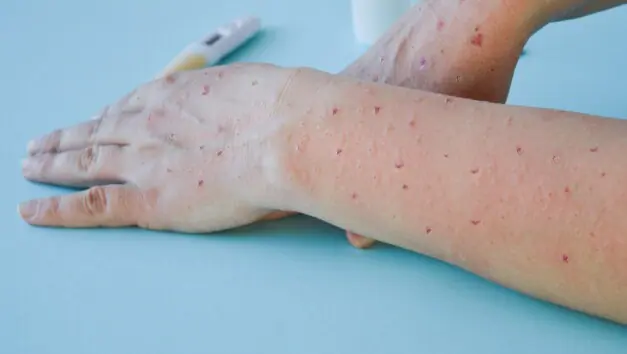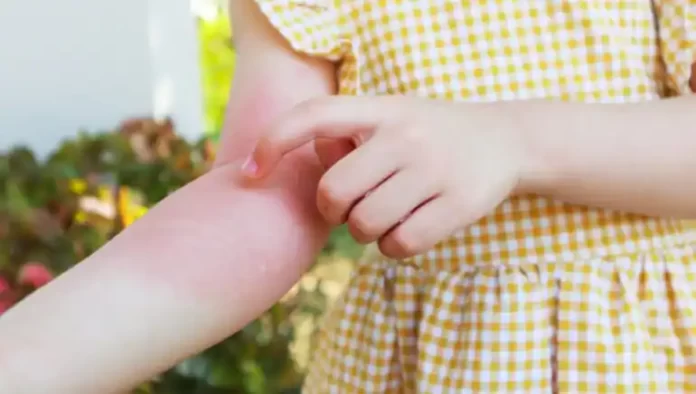In some regions of India, children are experiencing an unexplained fever due to tomato flu. Find more about its symptoms, causes, remedies, and safety precautions.
Along with the Covid-19 pandemic, other flus and illnesses are also growing. One of these is tomato flu or tomato fever. On May 11, 2022, Kerala received the first report of this exceedingly unusual viral disease, which affects 80 children under the age of five and generates blisters that resemble tomatoes.
Due to its contagious nature, Kerala’s neighboring states have also been cautioned that if precautions are not taken right away, the sickness may spread to other states.
It is imperative to raise awareness in order to identify diseases early on and prevent complications. So let’s talk about tomato fever in detail.
Describe tomato flu.
The fact that blisters are often spherical and red in color has led to the moniker “tomato flu.” It causes skin irritation, blisters, rashes, and dehydration in those who are affected. It is still unknown with certainty if the virus that causes dengue fever, chikungunya, or another condition is the causal agent
Health Shots met with Dr. Jagdish Kath Wate, a consultant neonatologist and pediatrician at Motherhood Hospital in Karadi, Pune, to get the full scoop on tomato flu.
According to Dr. Kath Wate, “tomato flu is a contagious viral illness brought on by intestinal viruses and is frequently found in children under five. Since tomato flu is contagious, those who have it must be kept in isolation.
But the condition can also affect adults. Normally, this sickness doesn’t represent much of a hazard, but occasionally it can cause a brain fever, making it critical to identify it quickly and get treatment.
Tomato flu symptoms
Children who have this virus typically have fever, rashes, skin irritation, and severe dehydration. Blisters that are primarily red in color and can develop on various body areas as a result of tomato fever.

According to Dr. Kath Wate, symptoms of tomato flu include fever, painful mouth sores, a rash with blisters on the hands, feet, and buttocks, fatigue, joint pain, stomach cramps, nausea, vomiting, diarrhea, coughing, sneezing, runny nose, high temperature, and body pains.
They are comparable to chikungunya’s symptoms.
Additionally, this illness may make it difficult for the child to perform regular tasks with ease. Skin darkening on the hands, knees, and buttocks are some more signs.
Prevention
This flu’s primary etiology is still a mystery. Since this flu is self-limiting, there isn’t presently a specific drug or treatment for it.
This indicates that if supportive care is provided, the symptoms eventually go away.
Here are some recommendations for treating this infection for children:
- Children with tomato flu should bathe in cold water.
- Apply skin lotion after a bath to soothe irritated skin.
- Avoid scratching the skin as the infection can spread.
- Drink enough water to stay hydrated. Boiled water is recommended.
- Cleanliness and hygiene should be maintained around children.
- Keep a distance from the infected person.
- Avoid spicy and salty foods.
- Take enough rest throughout the day.
- Follow the medication prescribed by the doctor to bring the fever down.

Tips to prevent getting this infection:
Children should avoid contact with people who have tomato flu, avoid sharing utensils, clothes, and other items used by the infected person, and practice excellent hygiene to stop the virus from spreading.
What if any symptoms appear?
Make sure to take your child to the doctor if you see any of these symptoms in them. Ask your child not to scratch any sores, rashes, or blisters. Maintain proper hygiene and give your child some downtime. Additionally, make sure your child is getting enough water.


